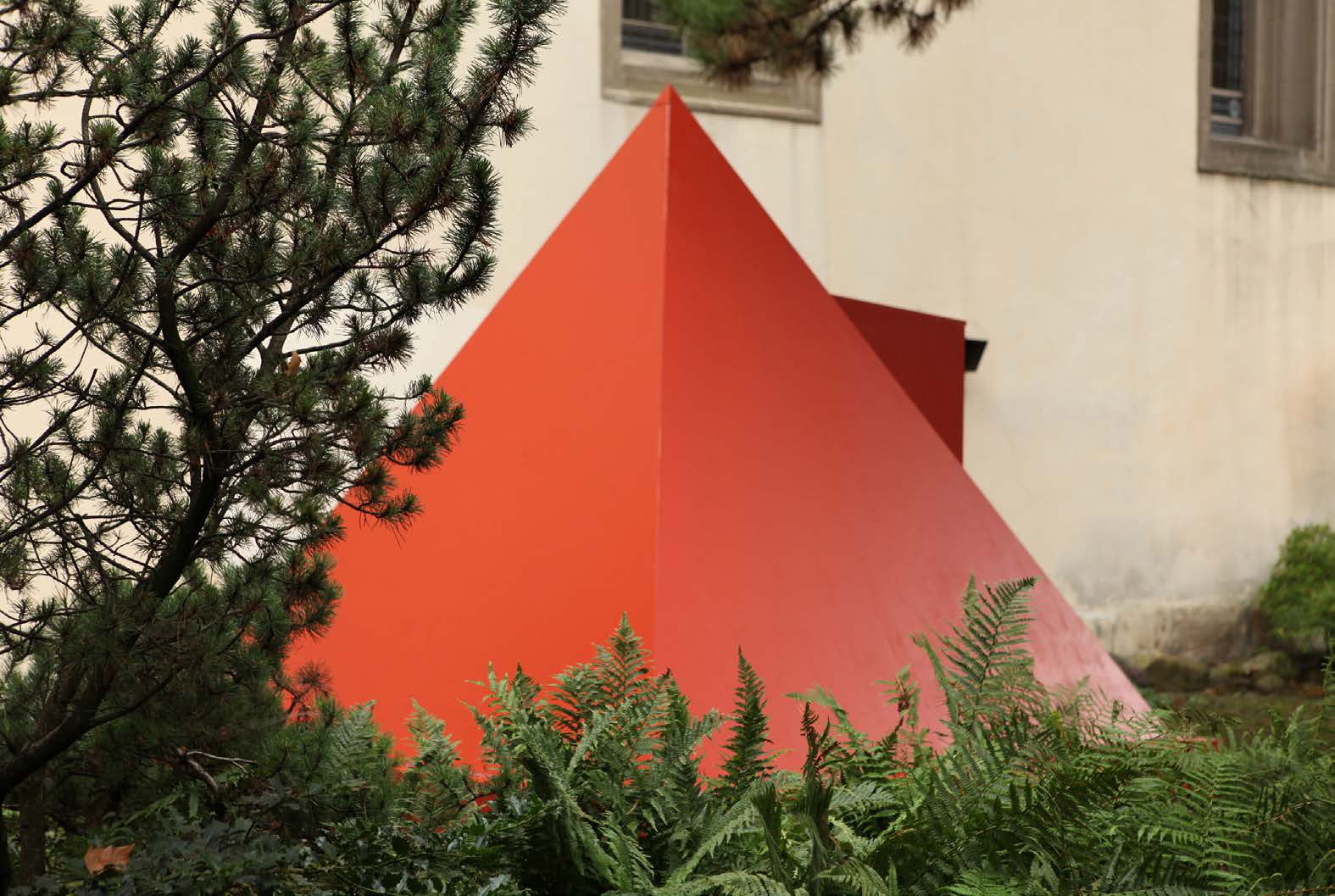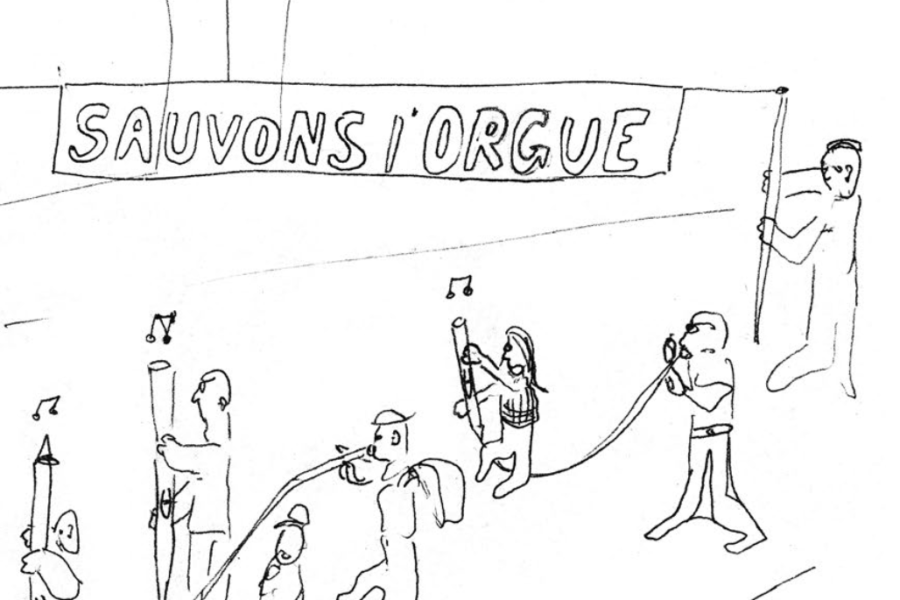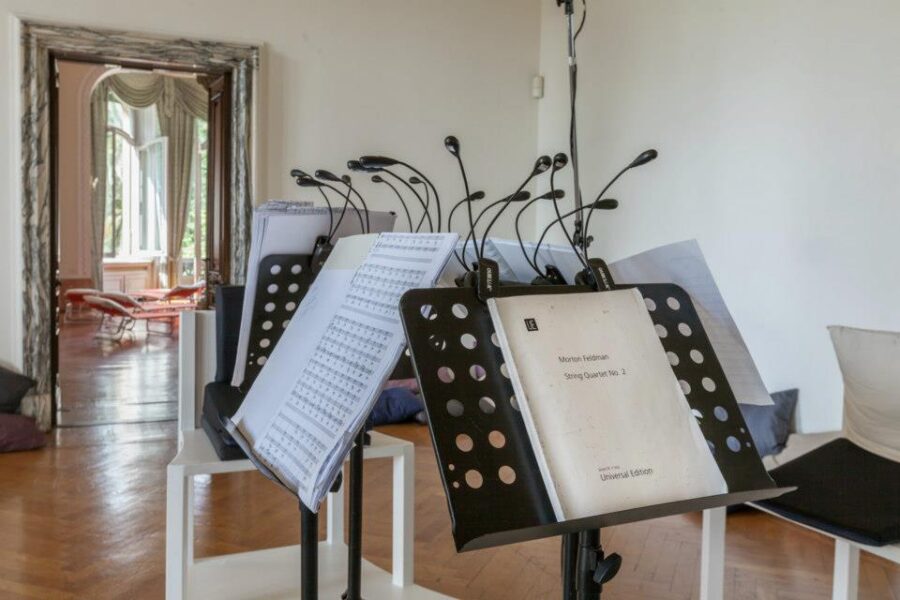This conversation was published on Idea #47 in 2015
VALENTINA VETTURI (b. Reggio Calabria, 1979) interweaves in her art writing, performance and memory. Her works are the result of long processes involving fragments of apparently diverse forms of reality. The countless invisible characters and voices that inhabit her performances and installations lie on the never-ending borderline between presence and absence, interpreting the world around us. She has taken part in residency programs in Italy and abroad, and her works have been shown in public and private institutions, including MAXXI (Rome), Kunsthalle Göppingen, tranzit.ro/Bucharest, Istituto Svizzero (Rome), Fondazione Sandretto (Turin), MACRO (Rome), Viafarini (Milan
ALEXANDRU POLGÁR Last year you created two works called Alzheimer Café I and Alzheimer Café II. The first is a public monu- ment in Germany, the second a performance in Italy. Would you be so kind to describe how did you arrive to the idea of working on this topic? And, in fact, what is the exact topic we are talking about ?
VALENTINA VETTURI
Once a woman forgot she was cheewing a piece of meat. She kept this piece in her mouth, chewing and chew- ing and chewing while it was changing shape. I wondered if she would ever be capable of swallowing it. This was the first note of the process that brought me to Alzheimer Café – memory as a piece of meat. A bolus you chew and chew, shaping it every time differently and not knowing if you will ever be able to swallow it. Immediately, the Alzheimer illness brought me somewhere else, or, rather, some steps away from it. Despite every mental association, Alzheimer Café is not a work about memory and is not a work about the illness. People affected by neurological disorders impairing their capability of remembering can have a sort of automatism that allows them to “remember“ singing, or making something similar to singing. Even when they are not able to remember their name anymore, they can recall pieces of songs, small motives and laments belonging to significant episodes of their life. Something similar can happen also with smells. I focused my work on this kind of “musical memories“.
I collected sounds made by patients suffering of Alzheimer and dementia and I imagined the Alzheimer Café as a space for preserv- ing them, a space for listening – a monument that could give a pub- lic space to these very intimate fragments of private memories that seem to fight, singing in order to not disappear.
Alzheimer Café found its first shape thanks to Kunsthalle Göppingen in Germany and his director Werner Mayer, who was immediately interested in the idea. Alzheimer Café I is a sculpture. A red pyramid made by wood. It has a door through which two or three persons can enter at a time to find themselves in an interior made of classical wallpaper. The glance however is captured immediately by two holes/boxes in the pavement, which play these sound memories
if opened. One is the basso continuo, and the other is the melody:
a musical puzzle made of collected sounds. The installation was presented in October 2014 in a public garden in the city of Göppingen, within the context of the public art program of the Kunsthalle and it will be soon moved in the courtyard of the Kunsthalle.
Alzheimer Café II was conceived and produced instead in Rome, thanks to MAXXI – Museo delle arti del XXI secolo – within the con- text of the exhibition Open Museum – Open City, curated by the artistic director Hou Hanru. Here the monument becomes performa- tive and imaginary. Alzheimer Café II is a cloud of the future; you can access it through guides that allow you to enter this field of energy and sounds.
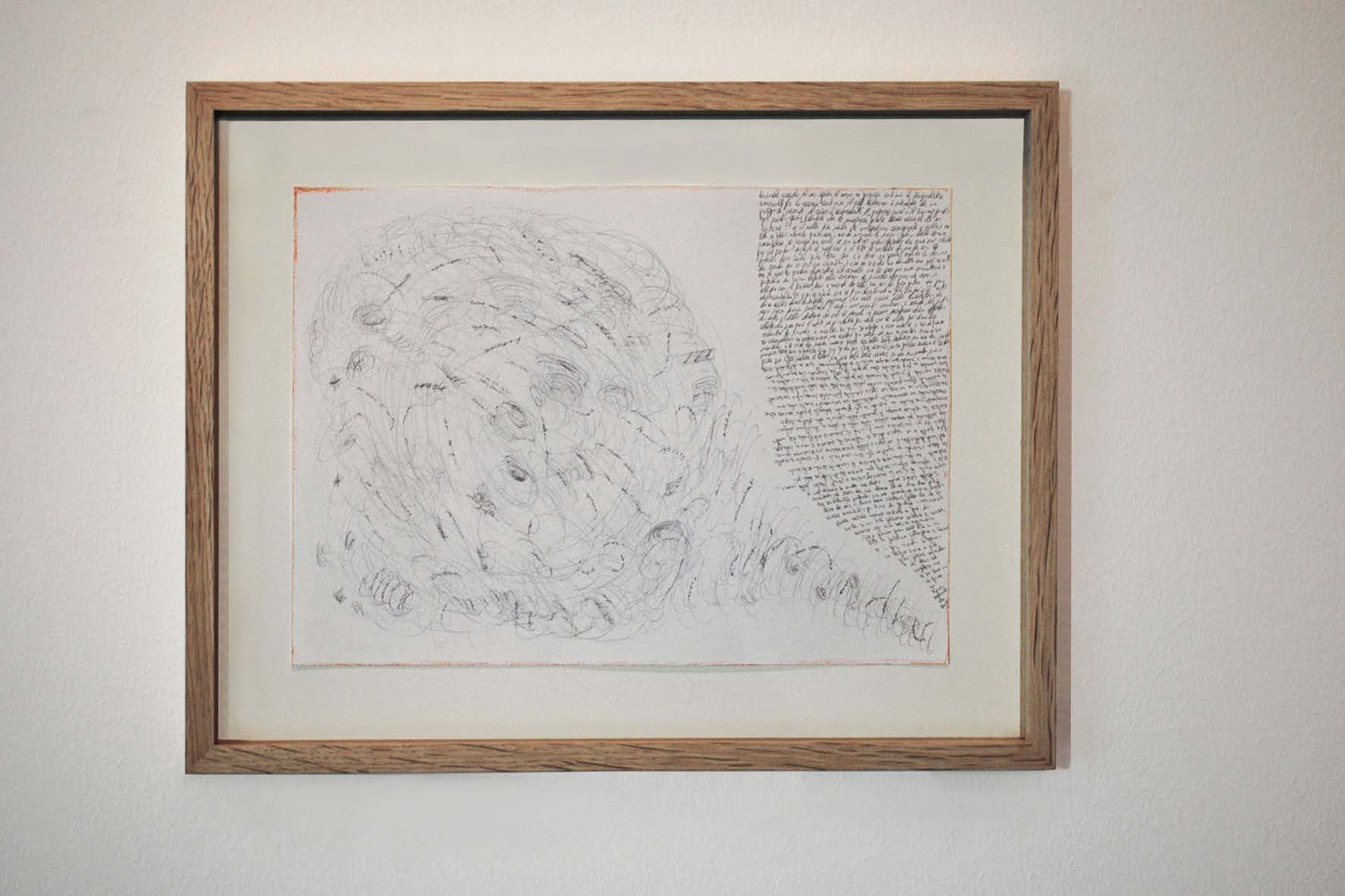
AP I can see the various strange reverberations between a monu- ment dedicated to both forgetting and memories, but could you tell us more about Alzheimer Café II? Although I can sense the process of weaving that brought you to these works, their topic – or rather their focus – is still floating in the cloud of motives that you have men- tioned. But perhaps this precise haziness – to put it this way – is part of your goal?
VV Haziness is indeed part of the nuances related to the topic: disappearance. The core of Alzheimer Café is something rather difficult to identify: motives, half songs, words with a residue of melody in them, melodies with no more words, voices playing in between
death and life. You can hear a weaving of broken voices, sometimes harmonious, sometimes disturbing, voices without gender, voices where the melody persist in spite of its consumption. I see both Alzheimer Café as multiplying devices for the memories of those who listen today to these intimate – but now public – sounds that initiallywere personal memories.
With Alzheimer Café II I imagined an unconventional space for listening in the near future. Five performers are the Charon, the guides of this space: wearing headphones and an essential uniform, they offer to the spectator an access to this landscape of sounds.
The gallery of the museum is white, empty and overexposed; the guides wait for the visitors in a line at the end of a grade. “Welcome to the cloud“ is one of the few words pronounced by the performers while giving the headphones. The whole attention is on hearing:
a floating environment of sounds, sometimes very near, sometimes far, compose and create Alzheimer Café II. The movements of the performers are slow and simple within the space, in-between pres- ence and absence: they are there to listen with. The trajectories of their bodies are built in relation to themselves and to the public.
Ten people inhabit the Alzheimer Café each time, all wearing head- phones: five are guides, five are visitors. It is a public environment where a very intimate connection grows between looking and hearing.
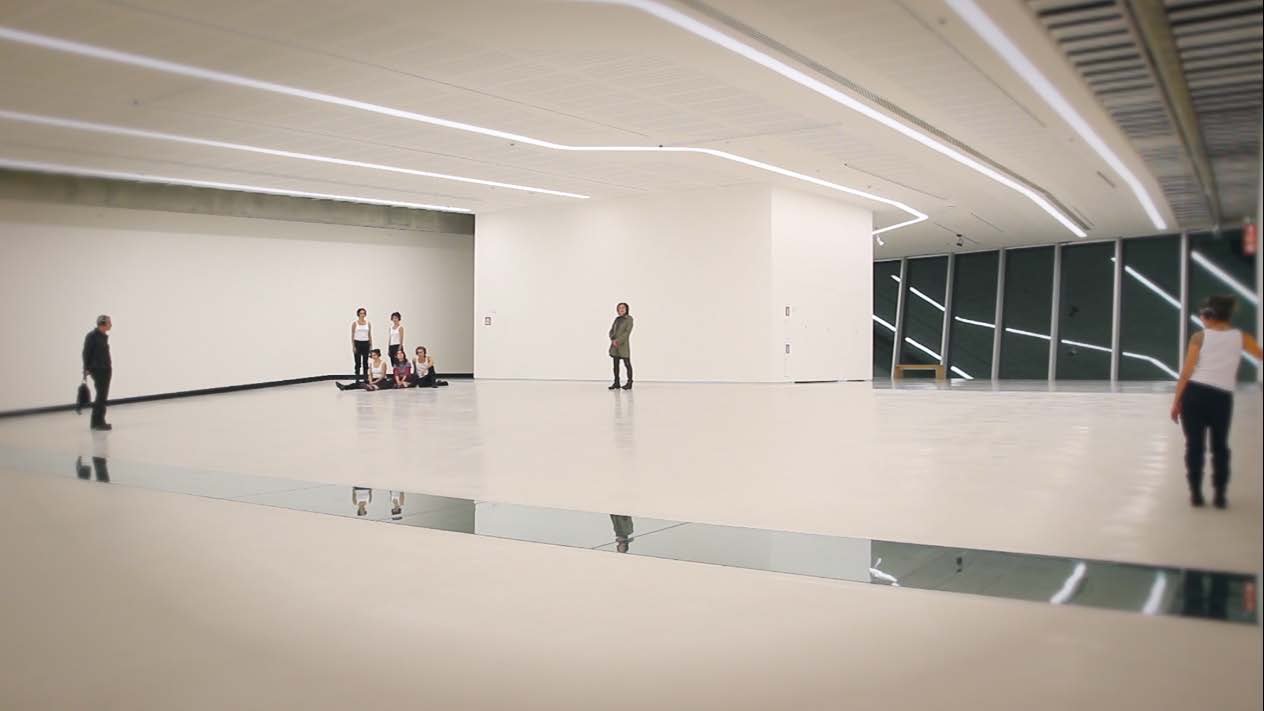
AP What is the meaning of the choreography, of the way these guides move? Also, how much did you intervene in the space of the museum, since the ground is slightly inclined? And what about the sounds, are they the same as in Alzheimer Café I?
VV There is no choreography in strict terms; we can talk about a guided improvisation. I gave some guidelines to the performers, which are interpreted by each of them and as a group in the space. There is a score and they have a certain freedom of interpreting it in relation also to the public. These guidelines are built together start- ing from the selection process with which I came to build the group. Regarding the space – I did not intervene on it in the sense of physi- cal modifications. The ground of the gallery 5 at MAXXI, the last gallery of the building, is slightly inclined and I built the performance working in strict relation with the space and interpreting it. Your last question concerned the sound. For Alzheimer Café I collected sounds in the city of Göppingen. There, I met German voices, but also voices from Italy, Spain, Hungary, and Russia. And I listened
and listened to these recorded voices, working and post-producing them having in mind the images of the musical boxes placed on the ground. This image was my score, as well as the idea of creating a duality between the two boxes: a basso continuo and a melody. The work of composition was made in what we can call a paratactic way. The voices were selected and tied together following the experience I had while collecting them and the experience I wanted to create for the spectator. What you hear is not far from a radio program, and this also in terms of the quality of the sound, where different pieces follow one another. The voices here are rough, like coming from the earth.
For Alzheimer Café II the research of voices took place in Italy, and these new voices were combined with some of the “German“ ones. The kinds of songs, melodies, sounds and even timbres collected in the two countries are very different. In this case the cloud was the score. I draw an image that guided the work of listening and post- producing in Alzheimer Café II. The composition is complex, articu- lated and not paratactic. The intent was to build a landscape where all the voices play, coexist and move together according to the float- ing of the cloud. You can come nearer to one or another while you walk and experience it.
In both works there is a fictional element. And this is the process
I am interested in: it starts by collecting elements from reality and then it is about processing the collected materials (sound, as in this case, or stories) with a fictional approach that brings them together in a new form.
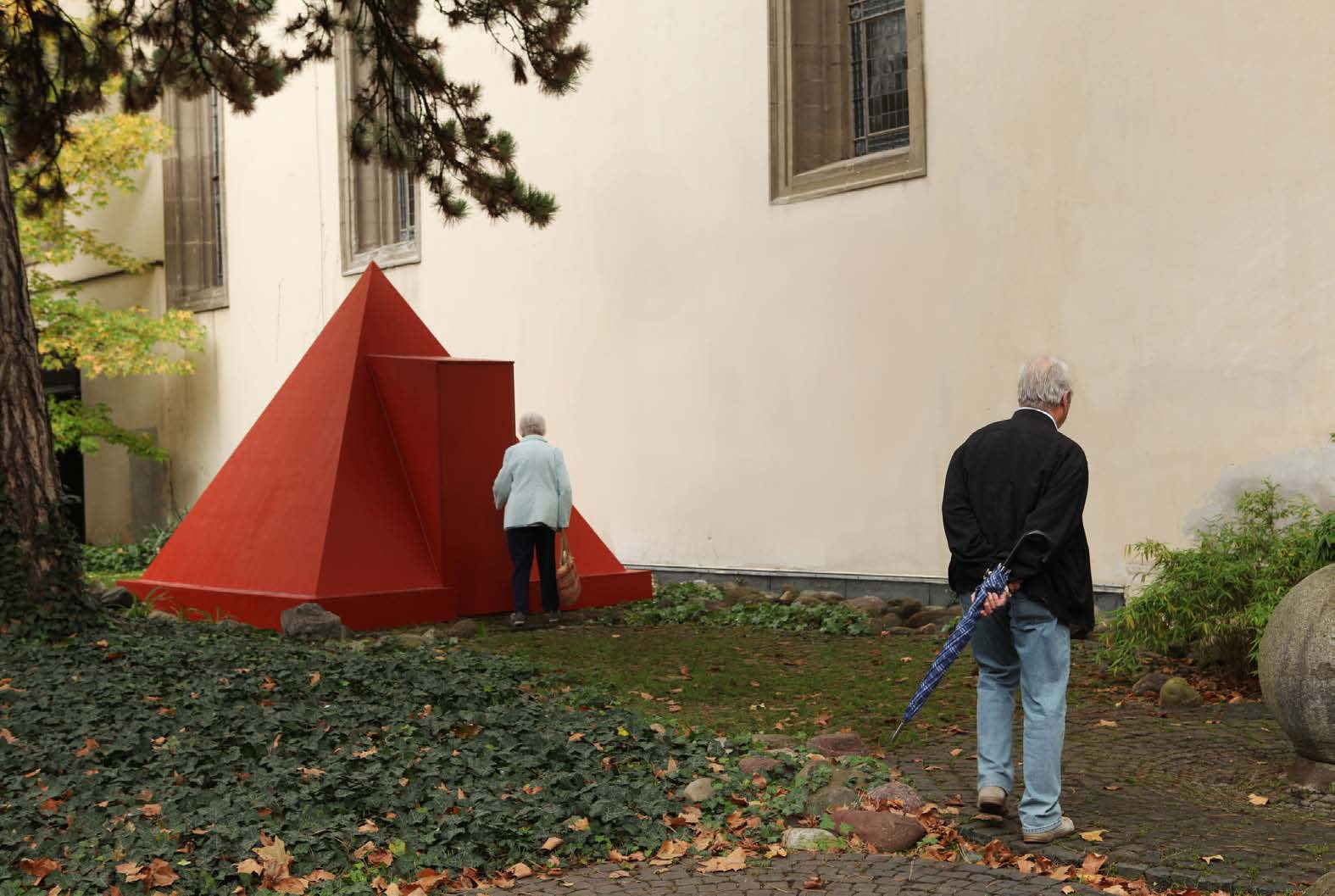
AP You mentioned the selection process of the guides. Could you, would you, tell us more about this? Also, you treated each guide as the access point to a cloud of recorded voices, fragments of memo- ry, songs, sounds – still, nobody could access the whole, the entirety of this picture that projects us through the voice of one guide to the year 2094. This running ahead, to look back from there to clouds of sounds resembles a bit the position of the “angel of history“ invented by Benjamin… Why do you want us to be in the future to look back at what you have collected now?
VV I’m glad you reminded me the “angel of history“. I read Benjamin’s text some years ago even if I did not explicitly think of it while working on Alzheimer Café. In the cloud, in this imaginary place in the near future, each guide gives to each member of the
public this temporal indication. Perhaps I wish to have a place in the future (a digital one? a real/physical one?) where to save our musical memories before they fade away. When you enter (now) through the headphones into the imaginary landscape of Alzheimer Café you are somewhere else and this somewhere else is made of an enormous amount of light and sound. It is a violent environment that deals with the idea of forgetting everything.
I would like to quote one of the books that accompanied me during the making of the work: Remembering the Future by Luciano Berio: “I will not concern myself here with music as an emotional and reas- suring commodity for the listener, nor with music as a procedural and reassuring commodity for the composer. It is my intention to share with you some musical experience that invites us to revise or suspend our relation with the past, and to rediscover it as a part of a future trajectory.“
On the selection process: when I am not the performer, I consider an essential element of the work the way I involve performers in the making of the work. It starts with the text I spread around to find them and then immediately with the first meeting with the candi – dates. I try not to select directly, but to initiate a process of mutual selection. For example, in this case the call was directed to dancers with experience in performance. I gave the first appointment not at MAXXI, but in a square in Rome early in the morning (and not every- one who wrote to me came) and there, as a first act of the meeting,
I presented to the group a performance of mine called La Funzione (The Service) inspired by Fernand Meyssonier, one of the last living executioners in Europe. I asked them to perform it in the square with pedestrians. I put them in a very unexpected and difficult situation and this experience made together started to build the group and, at the same time, allowed the ones who feel empathy toward this attitude of work to appear. During the days of rehearsal in the space of the museum, our work was based on improvisation and was made of different steps of approximating what happened later, when the public came on “the stage“. In my works I often involve certain cate- gories of people as performers (for instance, orchestra directors or teenagers, etc.), in this case dancers. Each time the group brings to the piece its own technical and human baggage of experiences, and
I melt them in the guidelines I have in mind.
And now I ask you to tell me or, better, to give an interpretation to why I want you to be in the future and look back to a present which will be past in that moment.
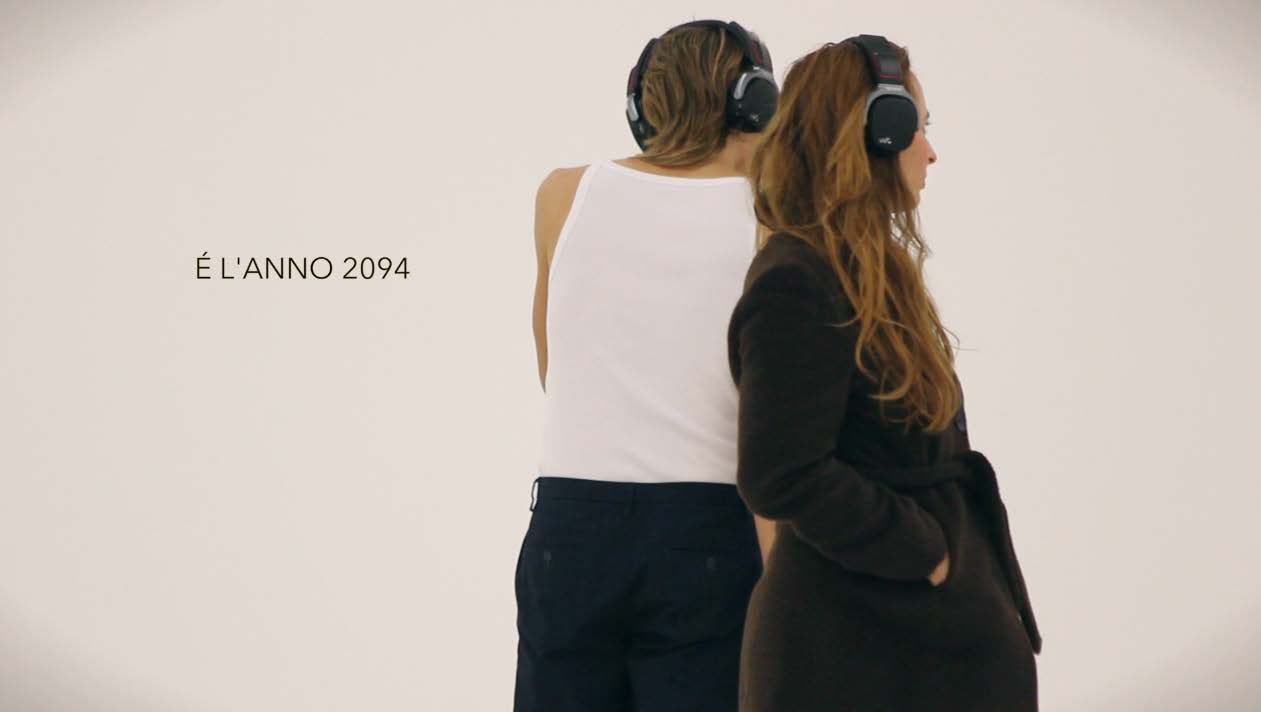
AP You know, it is interesting how the name of the coffee place as such (café) gets into the picture. While it can make some sense to me in the case of the pyramid, in this second work it seems to lose any concrete meaning and to function as some sort of “logo“, but always being there for us as a limit to the work itself, as to determine its basic atmosphere. Therefore, if I were to take upon myself the task
of answering the question of why do you want me – your public – to be in your café as if I were in 2094, I would say: because a certain sense of history comes to the fore in this way, perhaps a history of forgetting, if such a thing is possible at all. The strangeness of this ever falling out of ourselves that is called time, its precise shape as history of the world and as world history, and then the mental
debris, the songs that sometimes stick in our head and stay there against our attempts at getting them out, the human voice that bears the marks of illness, of a deficit of presence, of a different wiring or machine (or conscience) behind the voice, the sound of these voices collected, transformed in fact into a form of music, into a choir, but a choir only partially accessible, moving, like a cloud, created by per- formers, or rather by a protocol, setting, staging in which they play a part… well, all this mobilization of resources, of (logical-material) ele- ments create a syntax, but one that is not writing in the banal sense of painting a textual meaning. Instead, I have the impression that you take us, somehow, to the potential of a legibility, to a point – which is not a very clear one – that you want us to regard, not necessarily with our eyes, but with our attention, as if you would say: “Look, there is something there worth looking at, worth considering…“ Still, you only show us the elements of the two works, while we must com- pose them to figure out what they are really showing. What direction do they indicate? Is there a direction at all? Where do you look from? Where is your (logical) eye in this whole picture? No need to answer, because your view is already captured in the materiality of the works presented. One must, so to speak, look back on them, look at where they might come from, search for their origin. Is it really about you– as an author? Or is it about something that arrived to you and you allow it to appear?
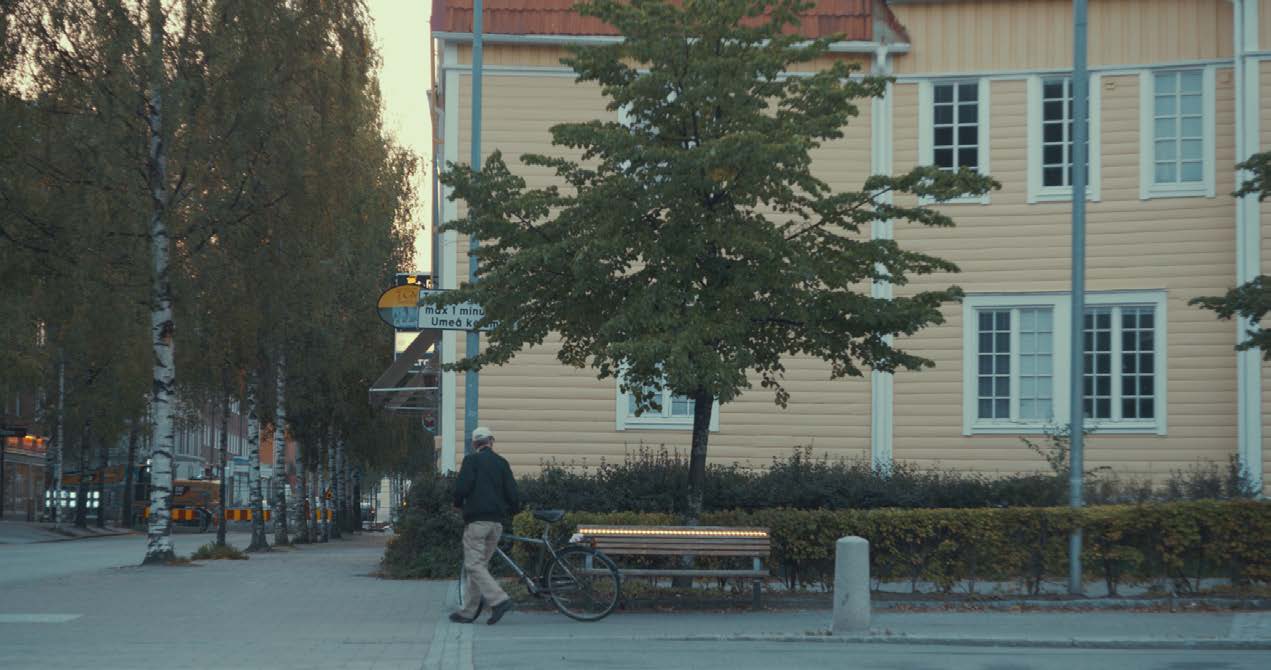
VV I appreciate that you are talking about time – which is crucial in my work – and that the works made you think of a sort of (im)possi- bile history of forgetting. The artworks I am interested, as public and as artist, do not give you (the public) a final solution, a complete key to read them and do not belong to the author more than to what s/he receives from reality and allows to appear. I am interested in topics that I feel are crucial, urgent in the times we are living.
Going back to the name, Alzheimer Café, the idea of the café has
no direct concrete meaning for me, neither in the first, nor in the second work. You are right when you talk about a general atmos- phere that is behind both works, even though I would definitively avoid the reference to a logo. If you invert the two words and type “Café Alzheimer“ in a web search engine, you will find where this
title came from. Alzheimer Cafés, in reality, are centers where patients and families of patients meet with a qualified staff to do dif- ferent kind of activities (informative ones for the families, and thera- peutic ones for the patients). And this was one of the starting points, a first image that led me to these works.
Last, I’m working on Alzheimer Café III, and it will appear in the near future somewhere.
This interview has been published by Idea Art and Society #47 in 2015.

